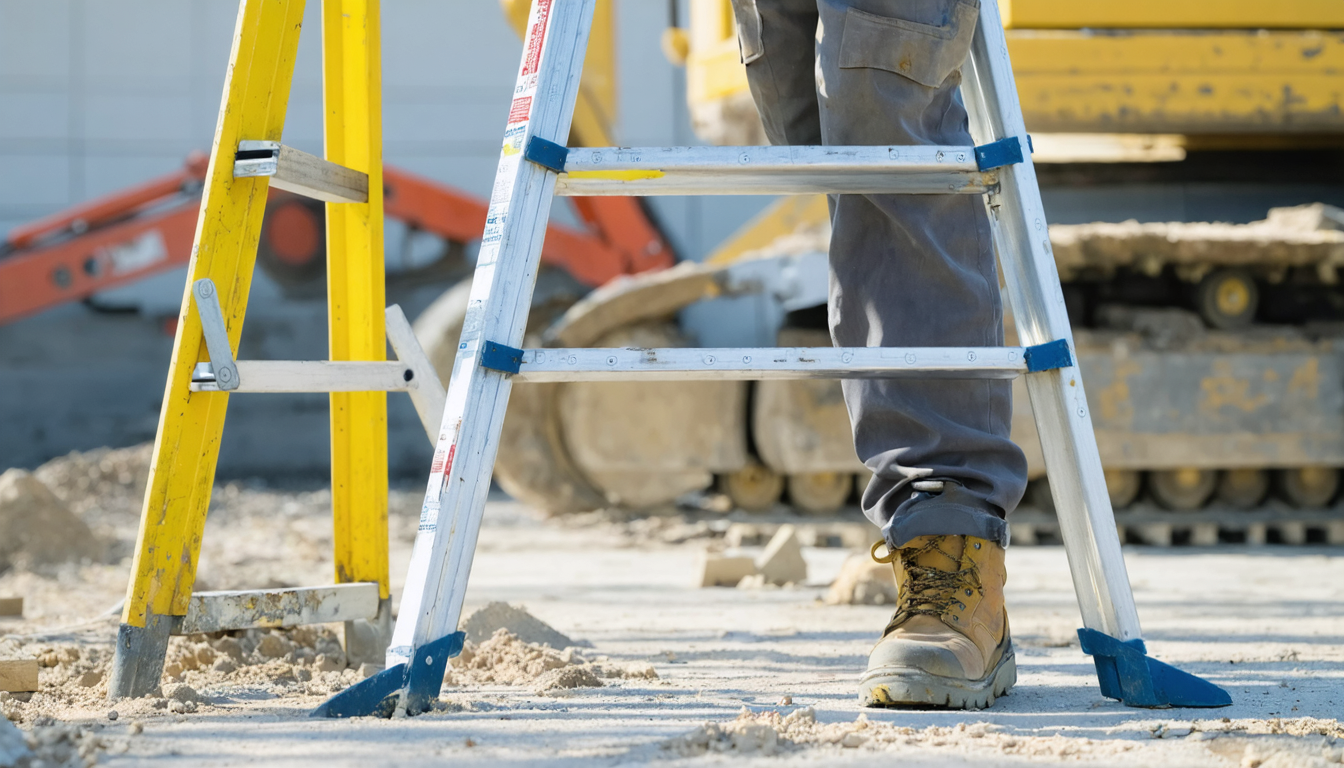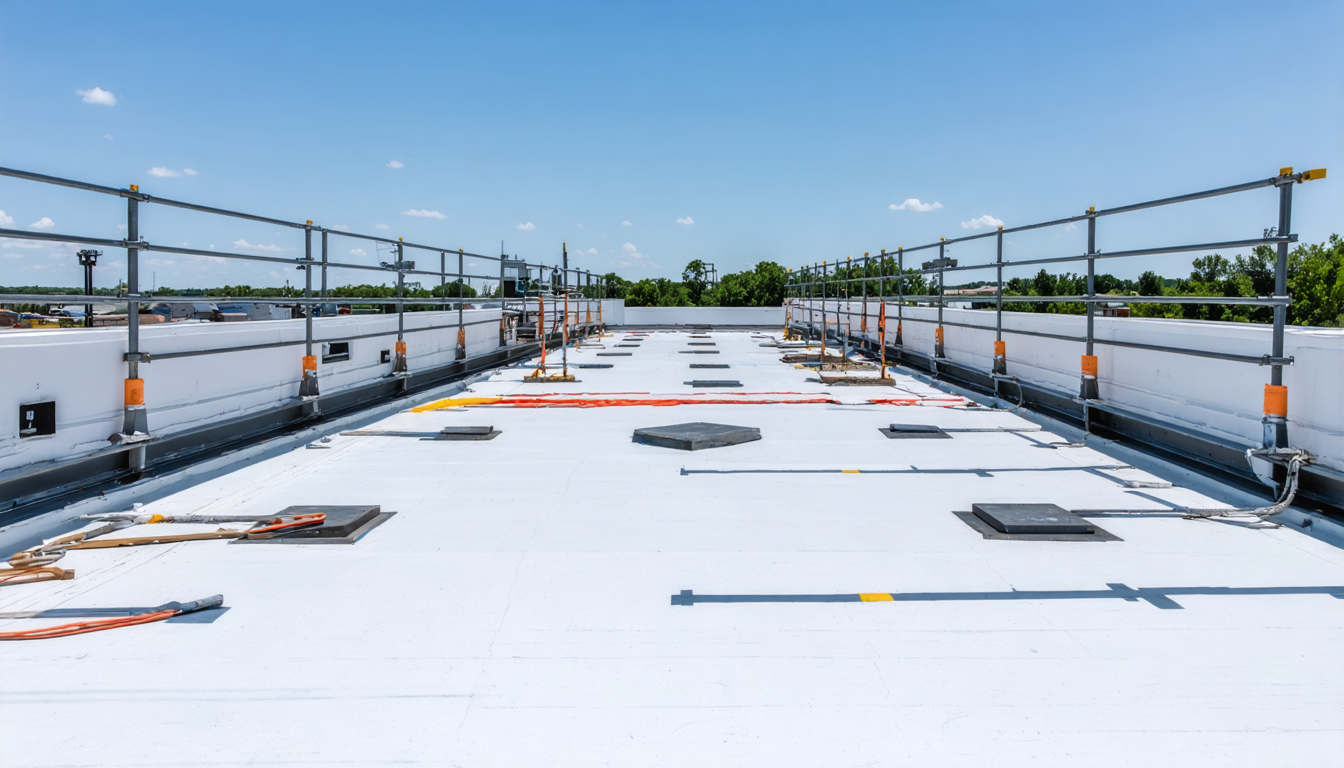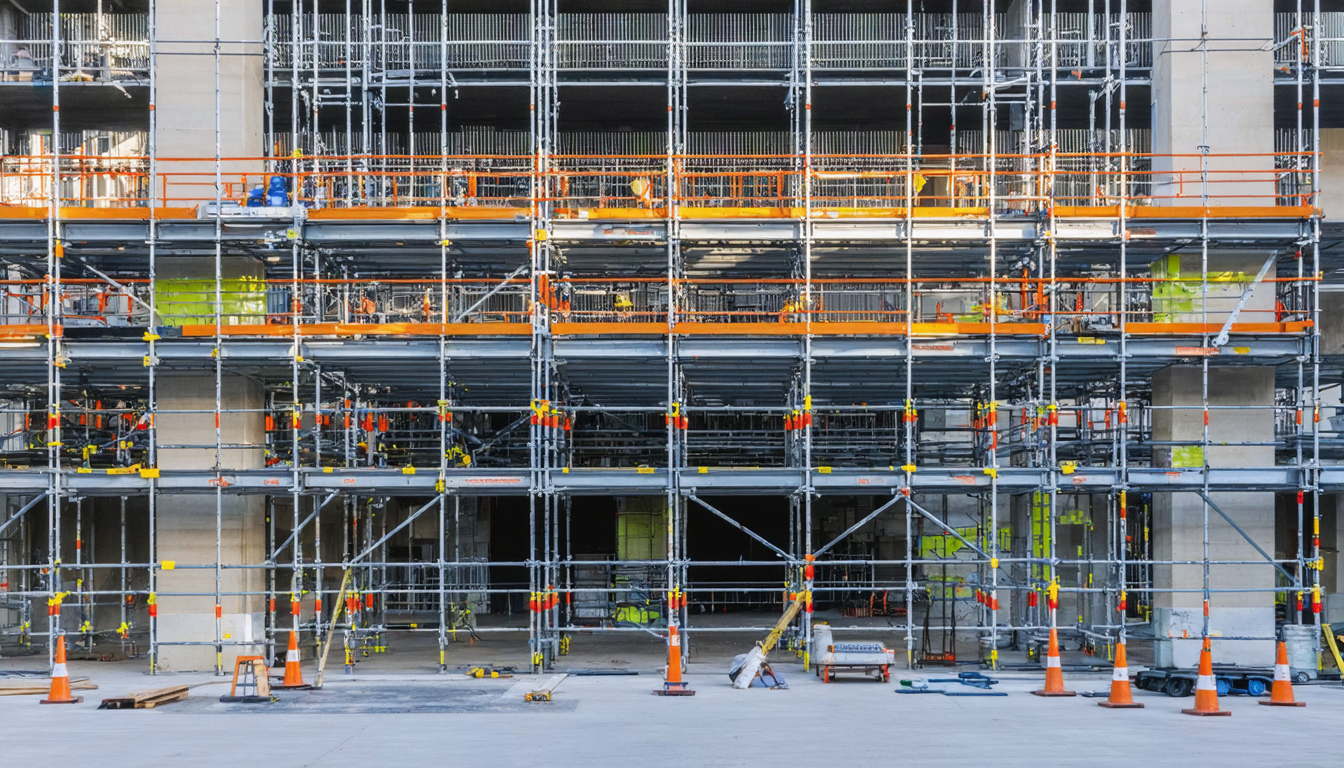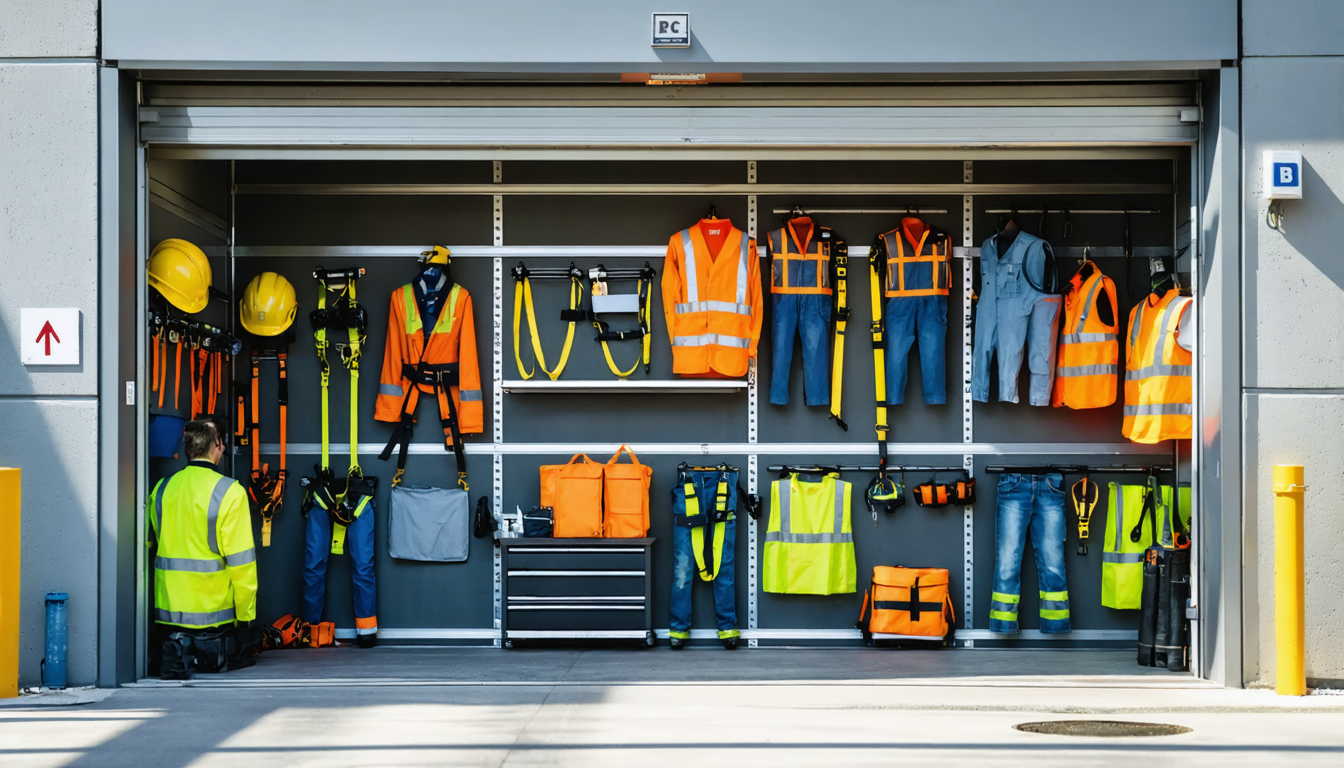Each year, falls from heights remain the most persistent—and expensive—safety challenge in construction. A single fall incident can cost employers $50,000 or more in direct expenses, and as much as four times that when factoring in indirect costs like lost productivity and project delays.
Here’s the good news: many falls are preventable. By combining proven safety protocols with modern AI-powered video analytics, safety leaders can catch hazards before they become incidents. This guide breaks down the real costs, the root causes, and provides a clear, practical framework for moving from a reactive to a proactive safety model—with technology as a force multiplier for your team.
Why Falls from Heights Are So Costly for Construction Teams
Falls from heights aren’t just an OSHA headline—they’re a daily operational reality that hits every level of a construction business. Here’s why these incidents are so disruptive:
- Financial Impact: A typical fall can cost over $50,000 in direct workers’ comp, medical, and regulatory penalties (Source: National Safety Council, 2025). For severe cases, costs often soar into six or seven figures, especially when legal claims and insurance hikes are factored in.
- Lost Productivity: Every serious fall means lost workdays, rescheduling, and the need to retrain or replace skilled workers—driving up project costs and pushing back deadlines.
- Compliance: Repeated incidents draw regulatory scrutiny and can damage contractor relationships, making it harder to win future bids.
The Top 5 Reasons for Falls from Heights in Construction—and How to Stop Them
Understanding the real causes behind falls is the first step to fixing them. Here’s what the data—and years of field experience—show are the five leading causes, with practical strategies for each.
1. Unsafe Ladder Use

The Hazard: Ladders are everywhere on a jobsite, but even experienced workers can become complacent. In one scenario, a crew member rushes to finish ductwork, climbs a worn extension ladder, and skips securing the base. Halfway up, the ladder shifts, sending the worker down. Ladders are the top source of fall injuries, with hundreds of incidents reported annually.
Traditional Prevention:
- Daily ladder inspections for defects or wear.
- Training to maintain three points of contact and use the right ladder for the job.
- Supervisors monitoring for unsafe practices.
How AI Amplifies Prevention: Video analytics can automatically detect when a person climbs a ladder and alert supervisors of unsafe behaviors—like carrying objects or skipping PPE—are observed. “Possible Fall” detection flags sudden movement or falls in real time, so help can be dispatched instantly. Over time, these insights help teams identify patterns: Are certain areas or shifts more prone to risky ladder work? Teams can then target training and process changes where they’re needed most.
2. Inadequate Roof Edge Protection

The Hazard: Crews are installing HVAC units on a roof when two workers step back to make room and find no guardrail between them and the edge. Both are one step away from a preventable fall.
Traditional Prevention:
- Installing OSHA-compliant guardrails, warning lines, or safety nets.
- Mandating personal fall arrest systems (PFAS) for all roof work.
- Daily checks of installed protection by a competent person.
How AI Amplifies Prevention: AI video can continuously monitor rooftop perimeters for missing guardrails, unauthorized access, or workers approaching edges. “Person Enters No-go Zones” analytics flag when someone enters a restricted area, while “Missing PPE” alerts highlight when harnesses or lanyards aren’t visible. This turns passive surveillance into a real-time safety net for supervisors—helping enforce compliance and trigger immediate action.
3. Unstable or Improperly Assembled Scaffolding

The Hazard: A laborer climbs a scaffold for drywall installation. The base is set on uneven ground, and the mid-rails are missing. A gust of wind, combined with a misplaced step, leads to a sudden collapse. Scaffolding falls account for a substantial share of serious injuries.
Traditional Prevention:
- Scaffolds erected and inspected by certified personnel.
- Strict adherence to manufacturer assembly guidelines.
- Regular visual inspections throughout the workday.
How AI Amplifies Prevention: AI-powered video can spot when scaffolding is assembled in a high-risk manner or when guardrails are missing. “Possible Fall” and “Person Enters No-go Zones” analytics provide real-time alerts if someone is working unsafely or in an unauthorized area. Quickly searching historic footage helps safety teams investigate incidents or near misses, improving accountability and driving retraining where it’s needed.
4. Unprotected Floor and Wall Openings

The Hazard: During a commercial fit-out, a worker steps onto what looks like a solid surface—only to find it’s a temporary plywood cover that’s shifted, revealing a gap. Falls through floor openings are often sudden and severe.
Traditional Prevention:
- Clearly marking all openings with warning signage.
- Using secured covers or guardrails around every hole.
- Assigning a “hole watch” during high-risk activities.
How AI Amplifies Prevention: AI video can monitor for “Person Enters No-go Zones” and flag when workers access or linger near unprotected openings. “Loitering” analytics detect when someone remains in a danger zone longer than expected, helping supervisors intervene before an accident occurs. Reviewing flagged incidents helps teams identify recurring problem areas, supporting targeted controls.
5. Missing or Improper PPE Use

The Hazard: On a busy site, a subcontractor climbs onto a steel beam without hooking up their fall protection harness. No one notices—until it’s too late. PPE non-compliance is a persistent challenge, especially with rotating crews and subcontractors.
Traditional Prevention:
- PPE spot checks at site entry points.
- Toolbox talks and safety meetings emphasizing proper use.
- Supervisor walkthroughs to visually confirm compliance.
How AI Amplifies Prevention: AI-powered video analytics can automatically detect “Missing Personal Protective Equipment (PPE)”—alerting teams in real time when workers aren’t wearing required gear like harnesses or helmets. This supports OSHA compliance, improves contractor accountability, and creates a culture where safety is always in sight.
Integrating a Modern AI Camera System: From NVR to AI Insights in Construction
Adopting new safety tech shouldn’t mean starting from scratch. The latest AI camera platforms are designed to work with your current infrastructure—no need to rip and replace every camera on site.
| Feature | Traditional NVR System | Cloud-AI Video Platform |
|---|---|---|
| Camera Compatibility | Often limited, new cams needed | Works with existing POE/legacy cams |
| Storage | On-prem hardware | Secure, cloud, scalable |
| Maintenance | Frequent, on-site | Minimal, remote updates |
| User Access | Limited seats | Unlimited users, unified dashboard |
| Video Review | Manual, slow | AI-powered event search |
| Actionable Insights | Passive footage | Real-time alerts: falls, PPE, no-go zones |
With a cloud AI solution, your site’s existing cameras become smart safety sensors. Plug-and-play hardware bridges your on-prem feeds to a secure dashboard—no bulky servers or complicated installs. The AI layer recognizes specific events like “Possible Fall,” “Missing PPE,” or “Person Enters No-go Zone,” surfacing what matters so your team can act fast.
Practical Considerations for Construction:
- Seamless Integration: Modern AI platforms are designed for compatibility, so you don’t need to overhaul your camera setup. Most solutions work with standard POE cameras.
- Scalable Access: Unlimited user seats mean safety, site, and operations teams can all access and review footage without bottlenecks.
- Supports Existing Programs: The system complements your current safety protocols, acting as a real-time check and a powerful tool for root-cause investigations.
- Incident Investigation: Searchable video archives cut incident investigation time dramatically—helping you understand not just what happened, but why.
When evaluating solutions, prioritize those that:
- Work with your current cameras and IT infrastructure.
- Provide real-time, actionable safety alerts.
- Offer simple user interfaces for frontline teams.
- Align with your OSHA compliance goals and site-specific risks.
Transform Your Construction Site Safety
Every fall from height is a signal: There’s room to make your site safer, smarter, and more resilient. By integrating AI-powered video analytics with proven prevention strategies, you can catch hazards before they become headlines—and empower every worker to go home safe.
Ready to see how video intelligence can support your safety culture and compliance goals? Book a safety consultation with Spot AI’s experts and get tailored, practical guidance for your team. Book a safety consultation
Frequently asked questions
What are the main causes of falls from heights in construction?
The top causes are unsafe ladder use, inadequate roof edge protection, unstable or improperly assembled scaffolding, unprotected floor and wall openings, and missing or improper PPE use (Source: OSHA, 2025).
How can construction companies implement safety technology without disrupting daily operations?
Modern AI video platforms are designed to overlay analytics on your existing camera feeds—no downtime or major hardware swaps required. They automate hazard detection and support your staff by surfacing actionable insights in real time.
Are there compliance standards for fall prevention in construction?
Yes. OSHA 29 CFR 1926.501 requires fall protection for work at 6 feet or higher, and there are specific standards for ladders, scaffolds, and PPE (Source: OSHA, 2025). AI video analytics support compliance by helping maintain consistent safety practices and documentation.
What steps should I take before adopting an AI camera system on my construction site?
Start with a risk assessment to identify high-risk zones and review your current camera coverage. Involve your safety, site, and IT teams early. Pilot the system in a critical area, measure its impact, and expand based on real results.
How does AI video analytics help with incident investigations?
AI-powered video systems automatically flag key events—like falls, PPE violations, or unauthorized access—making it easy to review footage, uncover root causes, and document corrective actions for compliance and insurance purposes.
Can safety technology help reduce stress for safety managers?
Absolutely. AI-driven analytics automate manual monitoring and reporting, freeing up safety managers to focus on proactive planning and team engagement rather than chasing down every incident.
About the author
Joshua Foster
IT Systems Engineer, Spot AI
Joshua Foster is an IT Systems Engineer at Spot AI, where he focuses on designing and securing scalable enterprise networks, managing cloud-integrated infrastructure, and automating system workflows to enhance operational efficiency. He is passionate about cross-functional collaboration and takes pride in delivering robust technical solutions that empower both the Spot AI team and its customers.






















.png)
.png)
.png)